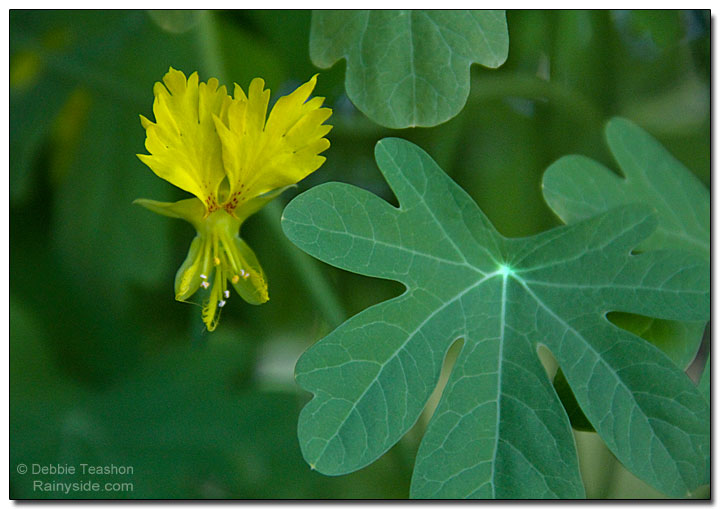Tropaeolum peregrinum
CANARY CREEPER, CANARY BIRD FLOWER
syn. T. aduncum, T. canariense
Family: Tropaeolaceae
Pronounced: tro-PIE-o-lum pe-re-GREEN-um
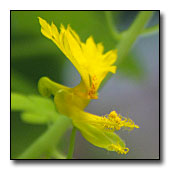
Quick Jumps
Growing Guide
Rainy Side Notes
GROWING GUIDE
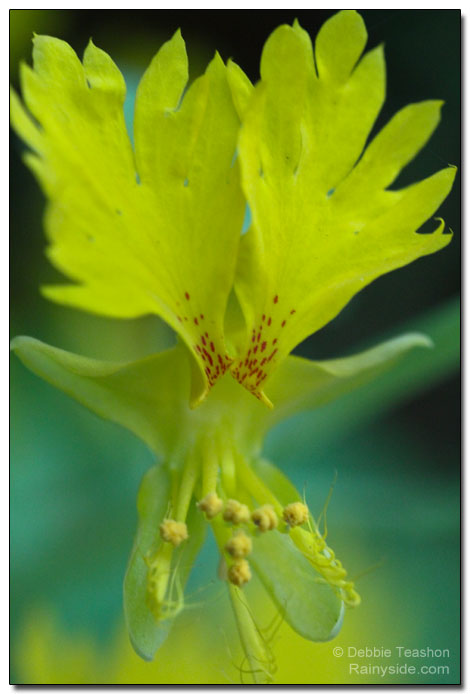
Origin:
Eucuador, Peru.
Plant Group:
Perennial Climber (tender plant in our climate, treat as an annual in the PNW).
Hardiness:
Sunset zones: Perennial in zones 15-24, H1, H2.
USDA zones: 9-10.
Mature size:
Height: 8-12 feet (2-3 m).
Flowering period:
Summer to Fall.
Flowering attributes:
Bright yellow flowers, with 3 small lower petals and two large upper petals with fringed edges.
Leaf attributes:
Bluish-green 5-lobed leaves.
Growth habit:
Climbs on supports.
Light:
Full sun to light shade in our maritime climate.
Soil:
Moist, neutral to acidic, fertile soil.
Feeding:
Not required.
Propagation Methods:
For earlier flowers start seed indoors six to eight weeks before last frost at 70°F (15-20°C). Seeds need to be in the dark for germination. They will germinate in 7 to 14 days. Our cold spring soil makes it difficult to start seed outdoors until late spring when the soil warms up. You can sow outdoors but plants will be very late in developing. If you sow outdoors, cover seed with ¼-inch soil. Germination will occur within 10-14 days. I have not tried sowing outdoors; I start mine indoors, and plant out later when the weather is settled.
Rainy Side Notes
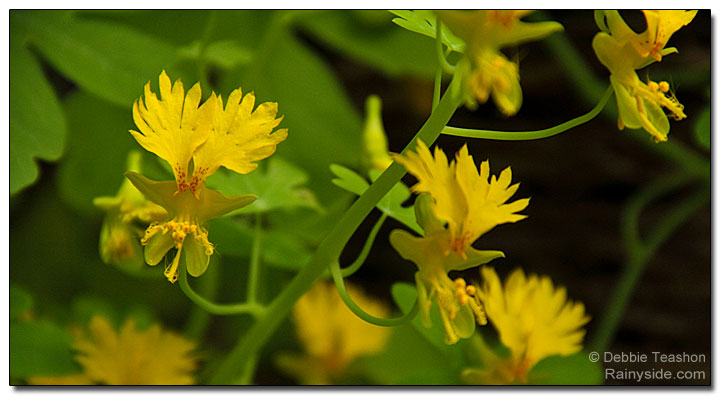
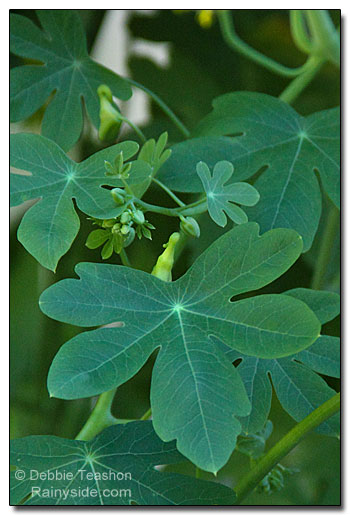
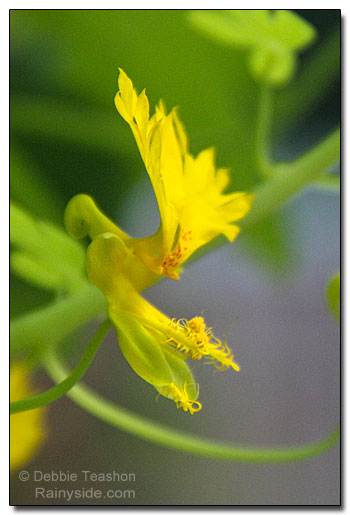
It takes a little more experience to grow these beautiful vines from seed, but what a plant to gain experience. Canary creeper favors our cool summer climate. This lovely, tender, perennial vine typically treated as an annual in our region, will winter over after a mild one. It did in the winter of '97-98 and 2002-03.
Protect T. peregrinum from slugs when young. Mulch the vine for winter as it may make a second appearance in your garden after a milder winter.
Flowers, young leaves, and fruit are edible and, like its cousin, the nasturtium, has the same peppery taste.
The petioles (the stalk of a leaf) are sensitive to contact; when it touches something like wire or string, it wraps itself around the object.
